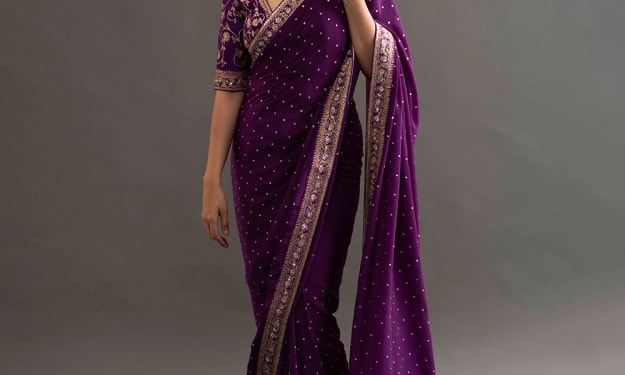How to Stop Being a Fashion Victim
The cruel nature of the fashion world doesn't mean you can't dress like a pro. Stop being a fashion victim.

Back in the day, I was a fashion victim to the extreme. I was the “weird kid” at school who dressed in ugly clothes, had zero trendy items, didn’t really have a look pulled together, and topped it all off with cat ears.
These days, I still dress a little quirky compared to others. However, there’s a pretty big difference about my look these days. Nowadays, I get complimented on my fashion sense. Shocking, right?
If you know that you’re a fashion victim, you’re probably wondering how you can make things better. Here’s how I learned to stop being a fashion victim. Use my knowledge well!
First, realize that being unique doesn’t make you a fashion victim.

Photo by Alex Iby
There’s a difference between being unique and being a fashion victim. Fashionable people make trends. Fashion victims break them or just don’t pull them off very well.
You can still be unique and stylish at the same time—contrary to what people at my college suggested. Take a look at James Dean, Coco Chanel, and Oscar de la Renta. They were not the norm, and yet, they’re style icons still remembered today.
If your look isn’t mainstream, don’t assume you’re a victim. What you need to start looking at instead is whether or not the clothing flatters you, looks good, and also gives people a positive impression. When choosing a fashion style, be yourself or lose yourself. If you don't consider this ideology, you need to stop being a fashion victim.
For example, my old penchant for wearing anime-inspired cosplay was a fashion victim move. The clothes weren’t flattering, they were cheaply made, and they were associated with a trend that suggests a lack of self-awareness.
On the other hand, wearing anime-inspired retro wave shirts with a pair of jeans and a leather jacket works. It flatters my figure, gives me an edgy-cool look, and also looks pricier. See the difference?
Here’s the hardest part about dropping your fashion victim status: figuring out who you are. What kind of aesthetic do you want to present to people? Do you know what would work well with your look?
I’d suggest putting together a mood board to help you figure out what kind of looks would work well for you and the “fashion vibe” you want to have. This is what actual fashion designers use to help them brainstorm new looks.
Honestly, it works.
Next, grab some garbage bags and prepare to annihilate your closet.
Actually, I lied. For most people who are trying to stop being a fashion victim, this is actually the hardest part. You’re going to have to go into your closet and clear it out.
You need to throw out all the clothes that don’t fit you, that you haven’t worn, that are torn, or that just don’t fit the aesthetic you want to have. Trust me when I say that it will be a lot of clothes.
Not sure if the clothes fit or flatter? Use the video above to help you determine fit, and ask an impartial third party to figure out if it’s flattering for you.
After you do all that, toss out clothes that are past trend—or clothes that have a very negative stigma attached to it.

Photo by Alexandra Gorn
Along with getting rid of clothes that just don’t look good, you’re going to have to get rid of the items that have a very negative stigma. Clothing that tends to be tied to extreme political views, social ineptitude, or similarly unsettling views all apply here
I want to point out that fashion oriented subcultures, such as goths or ravers, don’t count here. That’s a sense of fashion, and while most might not get it, it’s a lifestyle for those who indulge. If you have a subculture life, you can still embrace the signs you understand your personal style. You might also just want to separate your “nightlife” clothes form your daily wear so as not to appear like a fashion victim.
Go shopping for wardrobe staples that fit you.
Now that you’ve made space in your closet, it’s time to stock up on wardrobe staples. You will need to wear clothing that will complement your physique and work under a variety of different circumstances.
I suggest getting some black tees that fit your form, a pair of black jeans, some new denim, some white tees, as well as one or two additions to your professional attire.
Don’t be afraid to reach for outside help.

Professional shoppers exist because they have a keen eye for style, can help you cultivate your look, and will even help you pick out a good outfit for your look. Celebrities use them, fashion designers love them, and if you give them a chance, they can help you out, too.
Some services, like StitchFix, can help you stop being a fashion victim by getting the input of professional shoppers. Their guidance can help you do amazing things with your wardrobe.
A lot of people are fashion victims because they keep buying clothes that don’t fit them, or that just choke their closets. It’s a sign of a shopping addiction—and that’s something you need to address if you want to stop being a fashion victim.
Put your credit card on lockdown. Stop going to the mall to hang out. Put down that magazine. The more you realize you don’t need most of the “investment items” you’d buy, the better off you’ll be.
Consider using photoshoots to figure out how you look in outfits.
I’ve noticed that one of the easiest ways to figure out whether an outfit works for me is to have my photo taken in it. If I can make the outfit look good in standard poses, chances are that it’s a flattering outfit all-around.
On the other hand, if the clothes fall strangely, it’s a sign that the outfit just doesn’t look that good in real life. Obviously, there are exceptions to the rule, but it’s a good way to judge where you’re at in terms of your fashion judgment.
Personally, using photos was a key method I used to stop being a fashion victim. It might work for you, as well.
Anyone who works in fashion can tell you that accessories are what add “zazz” to an outfit. They are what shows you have personality. No accessories with your outfit means that you’re removing a large part of your outfit's appeal, and it might be a glaring sign you don't know how to dress.
Use accessories to add some individuality to your outfit. Whether it’s an anime pin in your hat, a nice glitzy ring, or even a spiked choker, you can make it work if you choose the right outfit for it.
Your shoes and bags matter, too!
Speaking of accessories, let’s talk about two other main portions of an outfit that fashion victims forget. You need to make sure that your shoes and bags match your outfit—or at the very least, don’t look like torn up messes.
A little coordination goes a long, long way when you want to stop being a fashion victim, and it could save you a massive headache in the long run!
About the Creator
Ossiana Tepfenhart
Ossiana Tepfenhart is a writer based out of New Jersey. This is her work account. She loves gifts and tips, so if you like something, tip her!






Comments
There are no comments for this story
Be the first to respond and start the conversation.